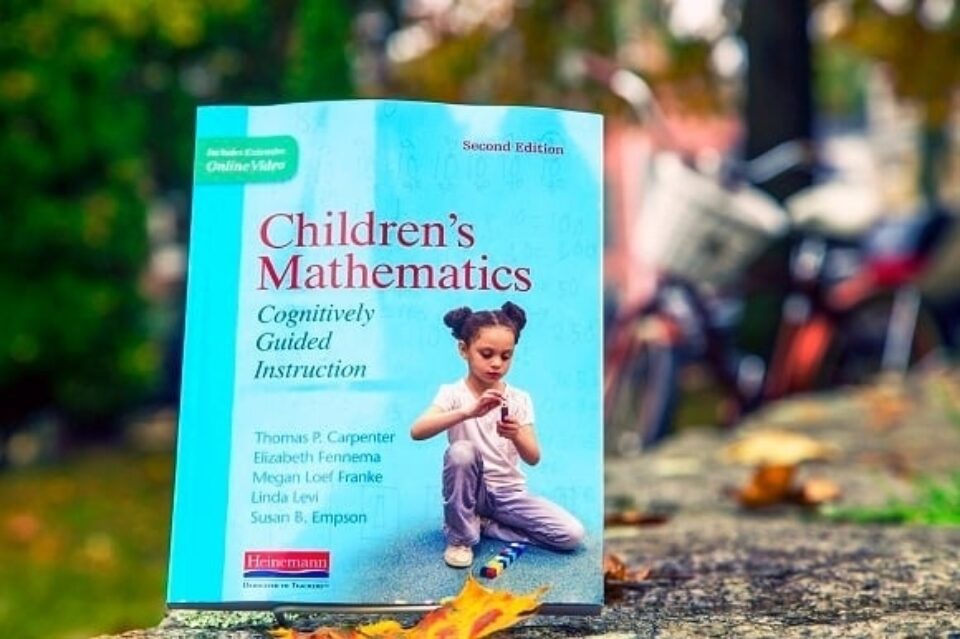
The philosophy of Cognitively Guided Instruction (CGI) has helped hundreds of thousands of teachers learn more about children’s intuitive mathematical thinking and teach math more confidently. In today’s blog, which is adapted from Thinking Mathematically, Tom Carpenter, Megan Franke, and Linda Levi talk about the value of viewing arithmetic in elementary school as an essential foundation for algebra.
By Tom Carpenter, Megan Franke, and Linda Levi
Learning mathematics involves learning ways of thinking. It involves learning powerful mathematical ideas rather than a collection of disconnected procedures for carrying out calculations. But it also entails learning how to generate those ideas, how to express them using words and symbols, and how to justify to oneself and to others that those ideas are true. Elementary school children are capable of learning how to engage in this type of mathematical thinking, but often they are not given the opportunity to do so.
Arithmetic is and will continue to be a major focus of the elementary school curriculum. But we need to reconsider how arithmetic is taught and learned. Often the learning of arithmetic is isolated from other related mathematical ideas. The artificial separation of arithmetic and algebra deprives students of powerful ways of thinking about mathematics in the early grades and makes it more difficult for them to learn algebra in the later grades. Understanding takes a long time to develop. The kind of mathematical thinking that can provide a foundation for learning algebra must be developed over an extended period of time, starting in the early elementary grades.
Children can learn arithmetic in a way that provides a basis for learning algebra.
If students genuinely understand arithmetic at a level at which they can explain and justify the properties they are using as they carry out calculations, they have learned some critical foundations of algebra. Unfortunately, the way that most students learn arithmetic does not provide a foundation for learning algebra. For many students, arithmetic is perceived as a series of calculations. Students do not think much about the properties of numbers that make the calculations possible. Consequently, when they begin to study algebra, they do not see that the procedures they are using to solve equations and simplify expressions are based on the same properties of numbers that they have used in arithmetic. Even worse, the conceptions of arithmetic that many students bring to algebra can actually get in the way of their learning algebra. It does not have to be that way. Children can learn arithmetic in a way that provides a basis for learning algebra.
For example, when children use their knowledge of simple arithmetic combinations to add multiples of ten, they are implicitly using a basic property that relates addition and multiplication. For example, a student might explain: "50 plus 30 equals 80, because 5 plus 3 equals 8, so 5 tens plus 3 tens is 8 tens, or 80." Symbolically, this can be represented as:
50 + 30 = 5 × 10 + 3 × 10 = (5 + 3) × 10 = 8 × 10 = 80
The same basic reasoning applies to simplifying algebraic expressions: 5b + 3b = 8b, because 5b + 3b means 5 times b added to 3 times b. Represented symbolically:
5b + 3b = (5 + 3)b = 8b
Or equivalently:
5 × b + 3 × b = (5 + 3) × b = 8 × b
Thus, understanding addition of multidigit numbers can provide a foundation for students to understand the principles that they will use to simplify algebraic expressions.
Focusing on fundamental properties of number and number operations also makes the learning of arithmetic more efficient and provides students with more powerful and flexible ways to apply the arithmetic they learn. Students who are successful in mathematics are not simply better at computing or manipulating symbols. By making generalizations and recognizing relationships among concepts and procedures, these students have less to learn and frequently are able to simplify their calculations. For example, students who understand the relation between multiplication and division can draw on this knowledge to simplify the learning of multiplication and division number facts. They can use what they know about 9 × 7 to figure out 63 + 9. Similarly, students who recognize that they can reorder and regroup numbers when they add them can simplify the calculation 75 + 48 + 25 by first adding the 75 and the 25.
We have found that students who learn to articulate and justify their own mathematical ideas, reason through their own and others' mathematical explanations, and provide a rationale for their answers develop a deep understanding that is critical to their future success in mathematics and related fields. Students not only need to learn the big ideas of mathematics; they need to learn the mathematical ways of thinking that are entailed in generating these ideas, in deciding how to express them, in justifying that they are true, and in using them to justify the mathematical procedures they are learning. They can learn these ways of thinking only by engaging in them.
Algebra is sometimes characterized as generalized arithmetic. We are proposing that the teaching and learning of arithmetic be conceived as the foundation for algebra. Our goal is to develop ways of thinking about mathematics and of engaging in discussion about mathematics that are more productive both for learning arithmetic and for smoothing the transition to learning algebra. Algebra often serves as a gatekeeper that prevents students from continuing the study of mathematics, thereby limiting their access to college majors and careers that require knowledge of mathematics beyond simple arithmetic. Developing mathematical thinking in the elementary grades puts students on a path to learning mathematics with understanding so that algebra is a gateway to opportunity, not a gate that blocks their way.
♦ ♦ ♦ ♦
Tom Carpenter is Emeritus Professor of Curriculum and Instruction at the University of Wisconsin–Madison.
Megan Franke is Professor of Education at the University of California, Los Angeles.
Linda Levi is Director of Professional Development in Cognitively Guided Instruction for Teachers Development Group, a nonprofit organization dedicated to increasing all students' understanding and achievement through teacher professional development.


